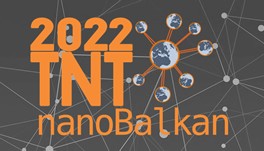

Gas and volatile organic compound detection in exhaled breath is an emerging diagnostic technique. Breath can contain thousands of such compounds, usually at ultralow levels, making it necessary to develop highly sensitive and selective detection tools. Carbon nanomaterial-based chemiresistors outperform the traditional metal-oxide sensors in terms of sensitivity at room-temperature, [1] which is convenient toward the miniaturization in point-of-care diagnostic applications. However, selectivity is a known issue still to be addressed and in the focus of current research efforts.[2] Two approaches are promising and compatible with each other to contribute substantially in the improvement of the selectivity. The first of them consists on the surface engineering of the sensing nanomaterial by including elements of known chemical affinity toward the target gas. We describe how the functionalization of carbon nanotubes with gold nanoparticles (Figure 1a) results in improved affinity toward hydrogen sulfide, a known marker of small intestinal bacteria overgrowth. A self-validation device results from the integration of multiple of such sensors in a single chip.[3] The second approach is based on the implementation of machine learning algorithms to maximize the information obtained from a single sensor. We report how its use with a graphene-based device helps to distinguish mmonia and phosphine, gases that interact similarly with graphene, by deeply analyzing their interaction kinetics (Figure 1b). [4] We predict that combining these two approaches can be a key step in the realization of novel, smart gas sensing platforms of high analytical efficiency.
References
[1] Pallvi Dariyal, Sushant Sharma, Gaurav Singh Chauhan, Bhanu Pratap Singh, Sanjay R. Dhakate, Nanoscale Adv., 3 (2021), 6514-6544
[2] Indah Raya, Hamzah H. Kzar, Zaid Hameed Mahmoud, Alim Al Ayub Ahmed, Aygul Z. Ibatova, Ehsan Kianfar, Carbon Lett. 32 (2022), 339–364
[3] Luis Antonio Panes-Ruiz, Leif Riemenschneider, Mohamad Moner Al Chawa, Markus Löffler, Bernd Rellinghaus, Ronald Tetzlaff, Viktor Bezugly, Bergoi Ibarlucea, Gianaurelio Cuniberti, Nano Research 15 (2022), 2512–2521
[4] Shirong Huang, Alexander Croy, Luis Antonio Panes-Ruiz, Vyacheslav Khavrus, Viktor Bezugly, Bergoi Ibarlucea, Gianaurelio Cuniberti, Adv. Intell. Syst. 4 (2022), 2200016








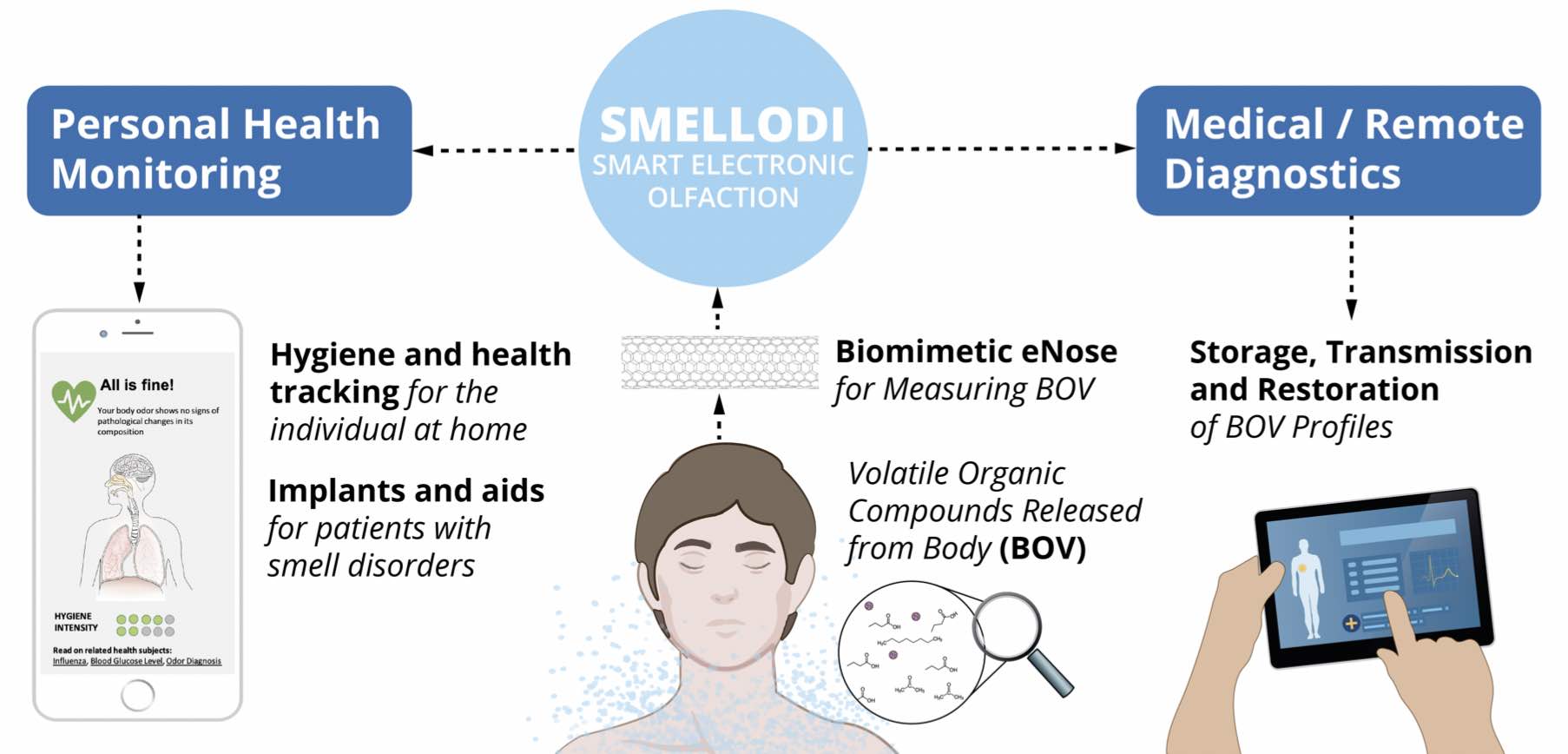

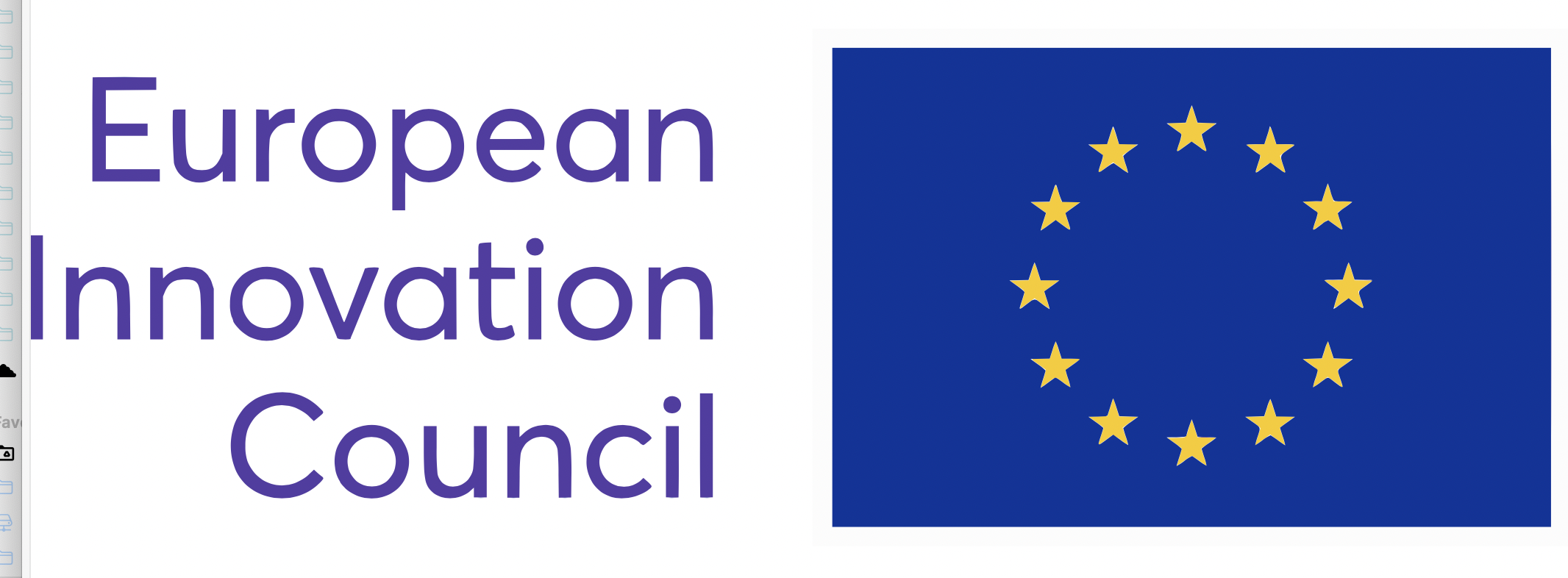

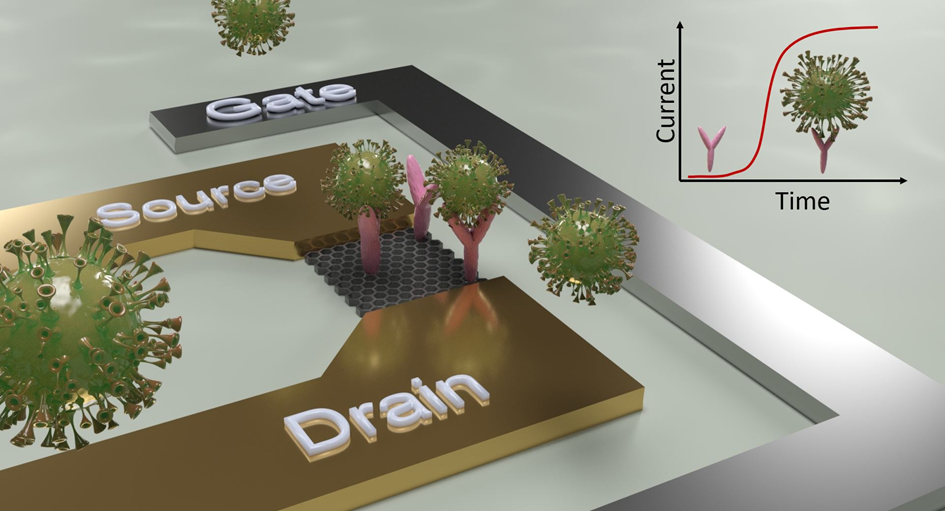



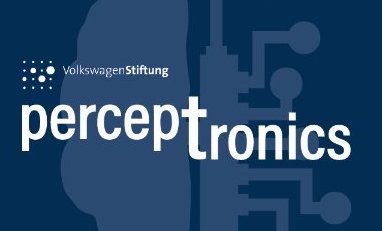



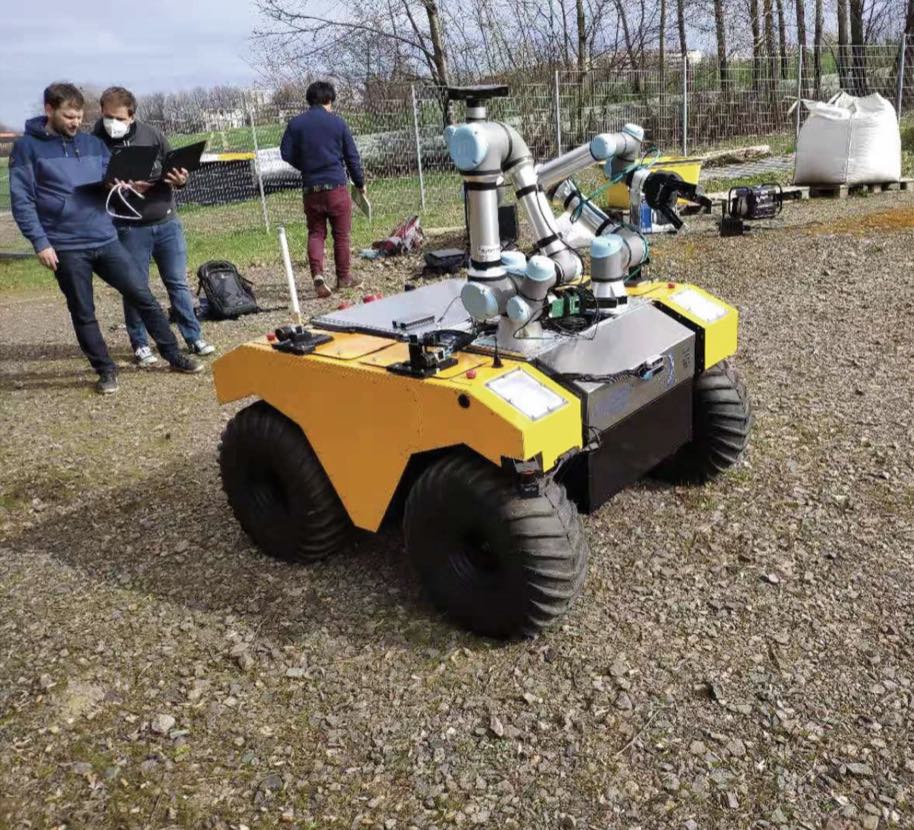

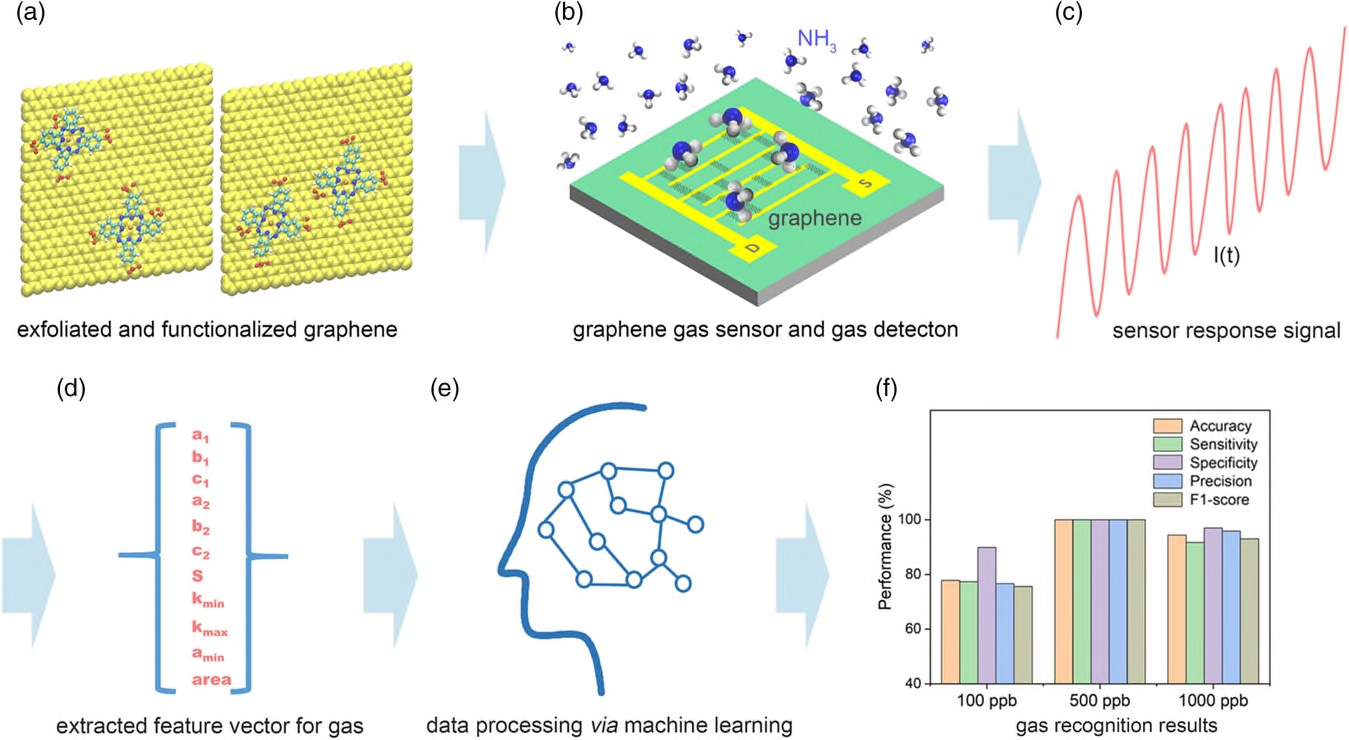



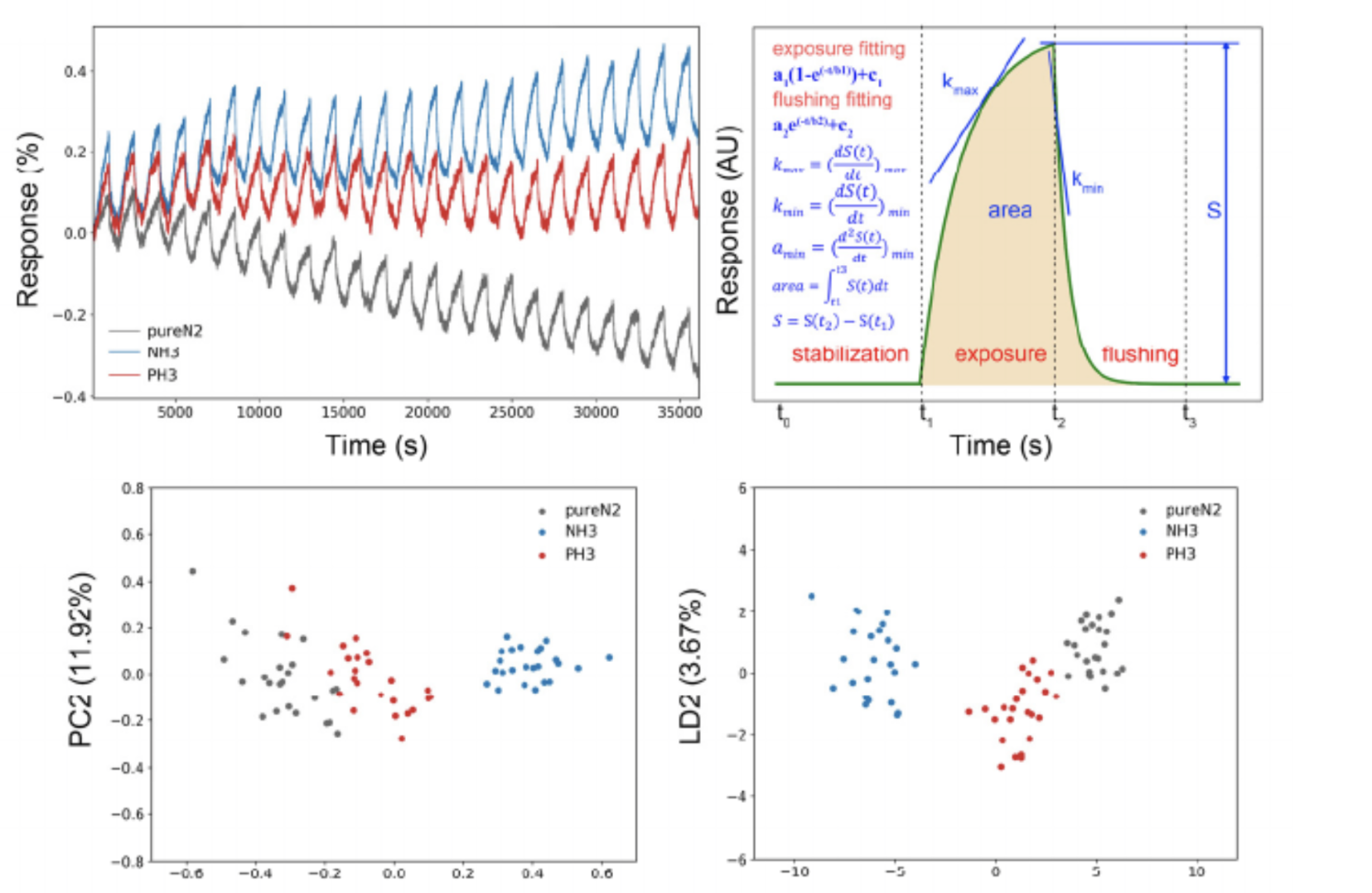



Gas and volatile organic compound detection in exhaled breath is an emerging diagnostic technique. Breath can contain thousands of such compounds, usually at ultralow levels, making it necessary to develop highly sensitive and selective detection tools. Carbon nanomaterial-based chemiresistors outperform the traditional metal-oxide sensors in terms of sensitivity at room-temperature, [1] which is convenient toward the miniaturization in point-of-care diagnostic applications. However, selectivity is a known issue still to be addressed and in the focus of current research efforts.[2] Two approaches are promising and compatible with each other to contribute substantially in the improvement of the selectivity. The first of them consists on the surface engineering of the sensing nanomaterial by including elements of known chemical affinity toward the target gas. We describe how the functionalization of carbon nanotubes with gold nanoparticles (Figure 1a) results in improved affinity toward hydrogen sulfide, a known marker of small intestinal bacteria overgrowth. A self-validation device results from the integration of multiple of such sensors in a single chip.[3] The second approach is based on the implementation of machine learning algorithms to maximize the information obtained from a single sensor. We report how its use with a graphene-based device helps to distinguish mmonia and phosphine, gases that interact similarly with graphene, by deeply analyzing their interaction kinetics (Figure 1b). [4] We predict that combining these two approaches can be a key step in the realization of novel, smart gas sensing platforms of high analytical efficiency.
References
[1] Pallvi Dariyal, Sushant Sharma, Gaurav Singh Chauhan, Bhanu Pratap Singh, Sanjay R. Dhakate, Nanoscale Adv., 3 (2021), 6514-6544
[2] Indah Raya, Hamzah H. Kzar, Zaid Hameed Mahmoud, Alim Al Ayub Ahmed, Aygul Z. Ibatova, Ehsan Kianfar, Carbon Lett. 32 (2022), 339–364
[3] Luis Antonio Panes-Ruiz, Leif Riemenschneider, Mohamad Moner Al Chawa, Markus Löffler, Bernd Rellinghaus, Ronald Tetzlaff, Viktor Bezugly, Bergoi Ibarlucea, Gianaurelio Cuniberti, Nano Research 15 (2022), 2512–2521
[4] Shirong Huang, Alexander Croy, Luis Antonio Panes-Ruiz, Vyacheslav Khavrus, Viktor Bezugly, Bergoi Ibarlucea, Gianaurelio Cuniberti, Adv. Intell. Syst. 4 (2022), 2200016



























